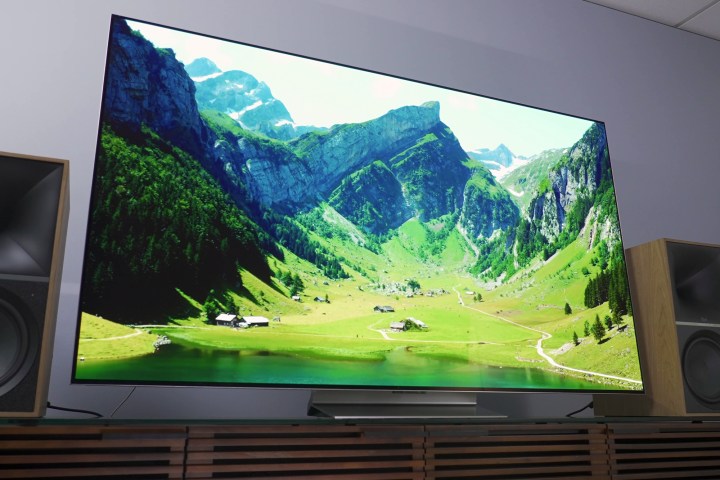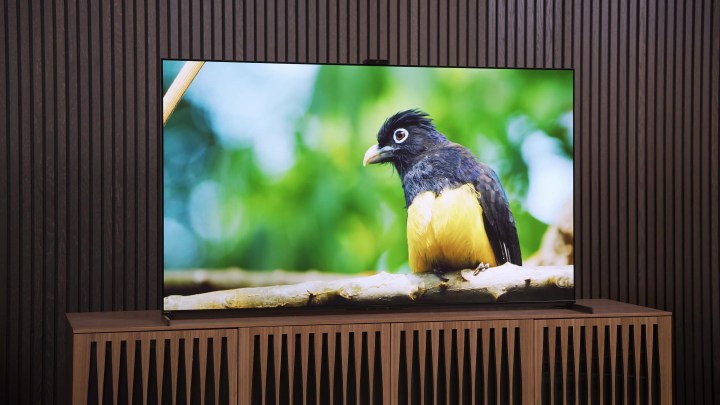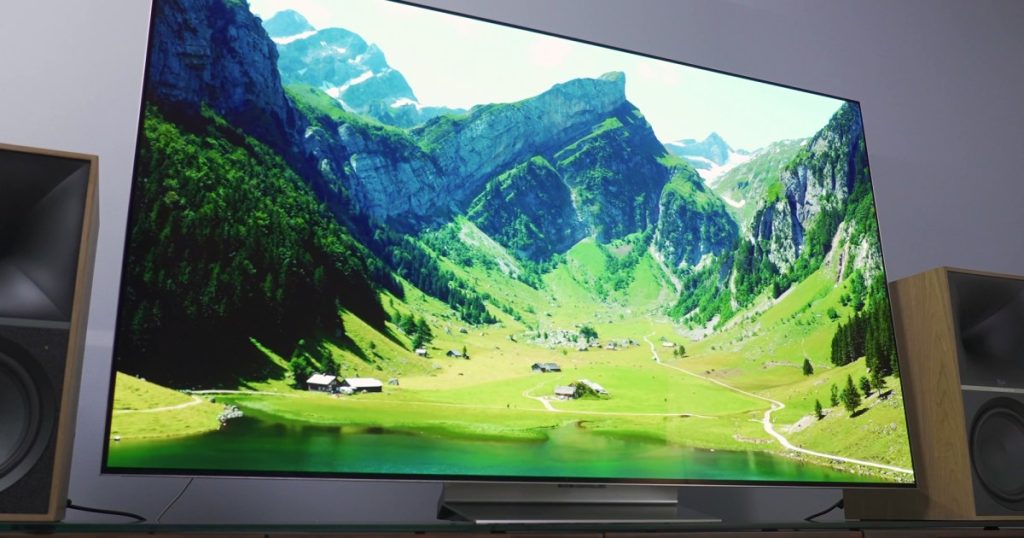Is your trusty old plasma TV finally giving up? Take your time to mourn, we understand. But when you’re ready to replace it, we highly recommend upgrading to an OLED TV.
Similar to plasmas, OLEDs do not have LED backlighting. Instead, they consist of self-emissive pixels made of organic materials that can independently turn on or off. This results in incredibly accurate and vibrant colors when lit, and pure, deep black when turned off. This is why OLEDs are known for their exceptional contrast levels.
Currently, LG is at the forefront of this picture technology, with three different LG sets featured in this list alone. However, with Samsung and Sony now producing QD-OLEDs (OLED panels with colors enhanced by quantum dots), there is some exciting competition to consider.
Without further ado, here are six of our favorite OLED TVs for 2024 so far.
LG C3 Series OLED
The best OLED for most people
Pros
- Delightful contrast
- Excellent color performance
- Very good processing
- Killer gaming features
- Five-year warranty
Cons
- Low-level color shift
- Too-frequent updates
Deciding on the “Best OLED for most people” was a tough decision, but after careful consideration and analysis of specs and cost, we have determined that the best OLED for most individuals is the LG C3 (at least until the 2024 LG C4 is available). Offering sizes ranging from 42 to 83 inches, the LG C3 provides stunning picture quality with impressive peak brightness levels. Moreover, the C3’s color and contrast capabilities are outstanding when it comes to both HDR and SDR performance.
Powered by LG’s advanced a9 AI Processor Gen6 (also featured in the LG G3), the C3 includes features like AI Super Upscaling 4K and AI Picture Pro. Additionally, the C3 comes with LG’s smart TV platform, webOS, for convenient streaming of services like Netflix and Disney+. Although the user interface may be a bit cluttered, the OLED’s performance is top-notch with 4K at 120Hz across all HDMI 2.1 inputs.
What sets the LG C3 apart from the premium G3 model listed below is the use of Micro Lens Array technology, allowing the G3 to achieve higher peak brightness levels. The G3 is designed to be wall-mounted (wall mount included), omitting the need for a stand (which can be purchased separately).
While OLED TVs shine best in dark rooms (bright room owners may prefer QLED technology), the LG C3 handles reflections well and offers great viewing angles in larger rooms with ambient lighting.

LG C3 Series OLED
The best OLED for most people

LG G3 Series OLED
The runner-up
Pros
- Excellent overall brightness
- Dazzling contrast
- Clean, sharp images
- Good motion handling
- Excellent for gamers
Cons
- Disappointing sound
- Frustratingly cluttered UI
When your TV is too good to come with a stand, you know it’s a premium one. The LG G3 OLED of 2023 comes in sizes ranging from 55 to 83 inches, each equipped with a proprietary wall mount that brings the TV close to your living room wall. This is intentional, as LG intends for this TV to be a focal point in your home, displaying artwork or family photos on the screen. The G3 features Micro Lens Array (MLA) technology, boosting the brightness significantly compared to the C3 model. The 2023 model also enhances processing with LG’s a9 AI Processor Gen6 and Brightness Booster Max.
OLEDs may not typically excel in brightness, but the LG G3 challenges this notion with its remarkable brightness levels. The G3 has four HDMI 2.1 inputs supporting 4K at 120Hz, catering to next-gen gaming needs like VRR and AMD FreeSync, and excelling in handling HDR content. Both the LG G3 and C3 models received DTS support last year, ensuring solid sound performance (although a soundbar or speaker system is always recommended).

LG G3 Series OLED
The runner-up

LG M3 Wireless
A wire-free flagship
Pros
- Gorgeous OLED picture quality
- Low-latency wireless for gaming
- Solid wireless signal connection
- Easy setup
- Good sound
Cons
- Wireless box needs true line of sight
It was only a matter of time before a TV company decided to go wireless, at least in terms of AV connectivity. The LG M3 Series goes a step further by eliminating cable leads entirely, wirelessly transmitting picture and sound to the TV via its Zero Connect Box.
The Zero Connect Box should be placed within 30 feet of the M3 Series, allowing you to connect streaming devices and gaming consoles to the Zero Connect. Our editor-at-large had the privilege of witnessing this in action and reported no discernible difference in picture quality compared to a traditional HDMI cable.
In terms of picture quality, the LG M3 is outstanding. Delivering excellent color and contrast, and featuring high brightness for an OLED display, the M3 is powered by LG’s phenomenal a9 AI Processor Gen 6, ensuring top-notch image upscaling.
Optimized for next-gen gaming, the M3 offers resolution and motion clarity up to 4K/120Hz. Available in sizes 77, 83, and 98 inches, this marks LG’s first venture into wireless TV tech, and the execution is already excellent, hinting at exciting future iterations of the M3 Series.

LG M3 Wireless
A wire-free flagship

Sony 65-inch XR A95L
The best OLED for videophiles
Pros
- Outstanding color accuracy and brightness
- Excellent contrast and luminance
- Great sound
- Gorgeous game mode picture quality
- Incredibly good upscaling
Cons
- Some deep features not available at launch
In our review of the Sony XR A95L, we couldn’t be happier. Awarded a perfect five out of five stars, this latest Sony QD-OLED flagship truly wowed us. With the QD-OLED display offering exceptional brightness, colors, and contrast thanks to quantum dots, the A95L is truly a top-tier performer. But there’s more to this TV that deserves recognition.
Equipped with Sony’s Cognitive Processor XR (CPXR), the A95L delivers unmatched picture quality. When combined with native panel technology and XR Triluminos Max, you get visuals that almost come to life on the screen. This is also Sony’s first QD-OLED to feature the Pentonic 1000 HDMI chipset, supporting Dolby Vision gameplay at up to 120Hz. Gaming features like VRR support and HDMI 2.1 connectivity are also top-notch.
While the Sony A95L boasts four HDMI ports, only two are HDMI 2.1-certified, with one serving as the TV’s ARC/eARC connection. This might pose a challenge for users intending to use eARC for Dolby Atmos or HDMI CEC purposes, but an HDMI switcher can resolve the issue.
Overall, the Sony A95L is on the cutting edge of TV technology, setting a high standard for other manufacturers to follow.



